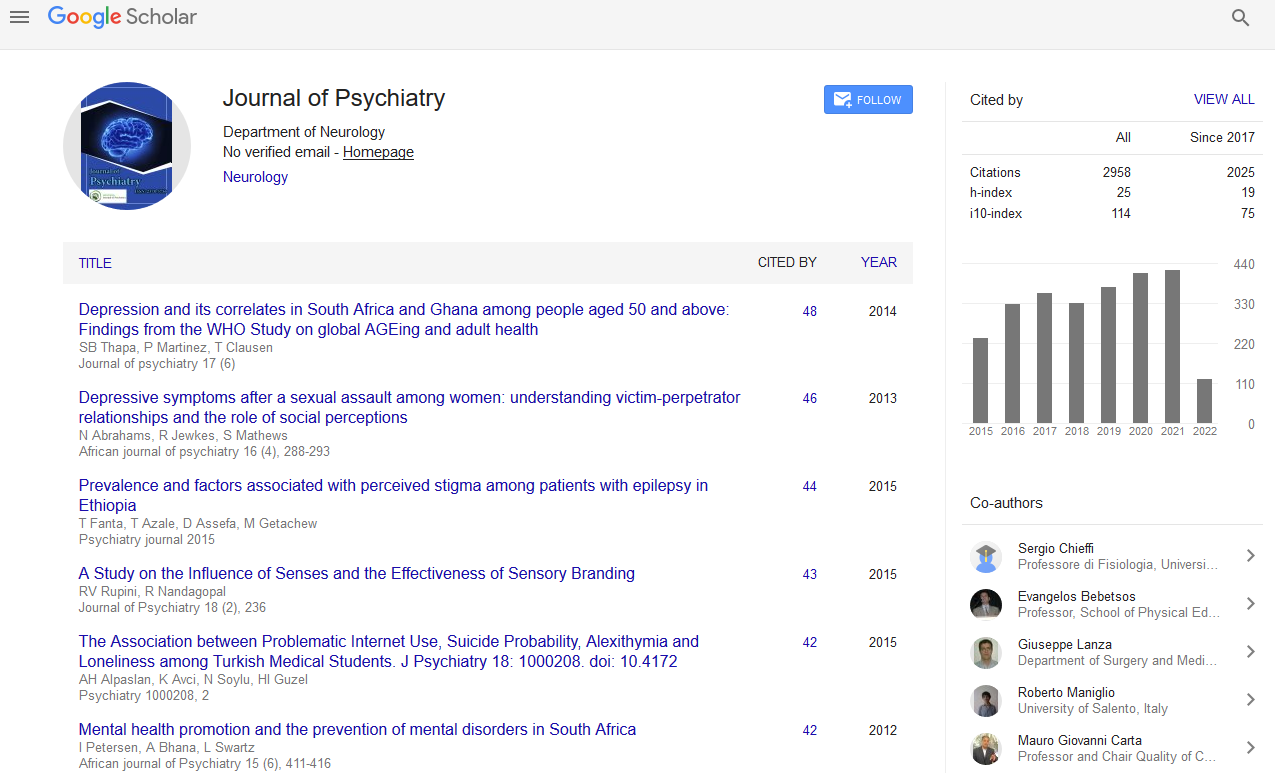PMC/PubMed Indexed Articles
Indexed In
- RefSeek
- Hamdard University
- EBSCO A-Z
- OCLC- WorldCat
- SWB online catalog
- Publons
- International committee of medical journals editors (ICMJE)
- Geneva Foundation for Medical Education and Research
Useful Links
Share This Page
Open Access Journals
- Agri and Aquaculture
- Biochemistry
- Bioinformatics & Systems Biology
- Business & Management
- Chemistry
- Clinical Sciences
- Engineering
- Food & Nutrition
- General Science
- Genetics & Molecular Biology
- Immunology & Microbiology
- Medical Sciences
- Neuroscience & Psychology
- Nursing & Health Care
- Pharmaceutical Sciences
Abstract
Assessing Prevalence of Depression Among General Population of Selected Rural Community- A Descriptive Survey Design
Gulzar Ahmad Bhat and Perkash Kour
Background and objectives: Depression is an illness that affects both the mind and the body and is a leading cause of disability, workplace, and absenteeism decreased productivity and high suicide rates. The study aims to assess the prevalence of depression among rural population of selected village of Kashmir, India.
Methods and findings: A community based survey of depressive symptoms was carried out on a purposive sample of 276 subjects in the age group of 20-80 years, who volunteered to participate in the study were recruited. The research design adopted for the study was descriptive survey design. The Depression was assessed by using the Radloff LS (1977) Centre for Epidemiologic Studies Depression scale: This scale was developed to measure symptoms of depression in rural population.
Results: Out of total 276 recruited subjects, 66.3% were females, 68.1% were married, 63.4% belong to nuclear family and 48.2% had low socioeconomic status (low income). Maximum representations (40.9%) of selected subjects were house workers (housewives). Analysis of information on gender, education, marital status, family income, occupation obtained from this sample of 276 subjects suggested that the overall prevalence of depressive symptoms was slightly higher in males than in females, p>0.002 in males, illiterates, p>0.019; married, p>0.002. Low family income and nuclear family has strongest association with depression. 21-40 years of age also found to be significantly associated with depression.
Conclusion: The study concludes that prevalence of depressive symptoms among the rural population is common especially in males, married, illiterates, low family income and nuclear families.


